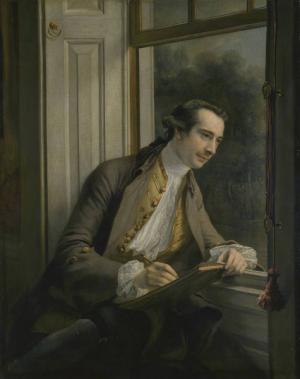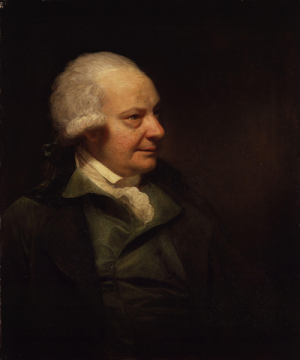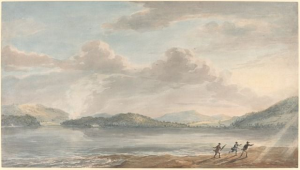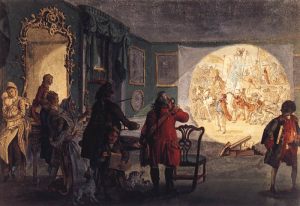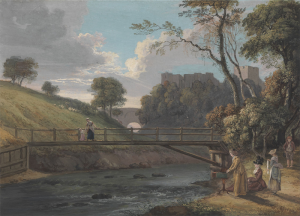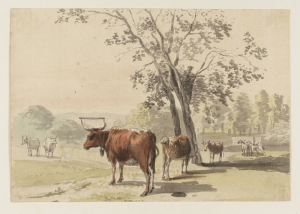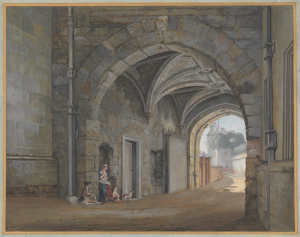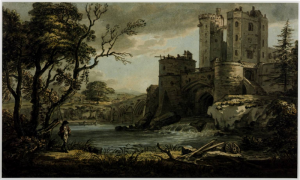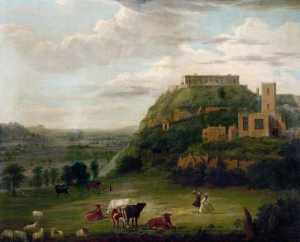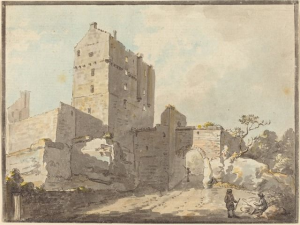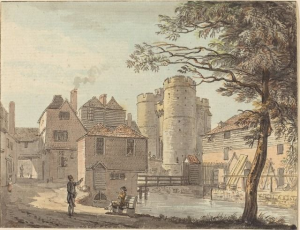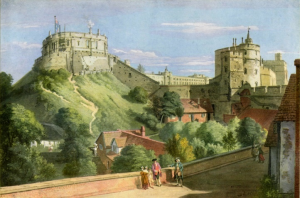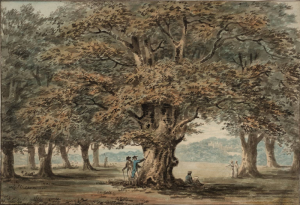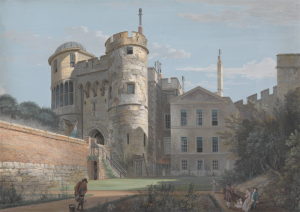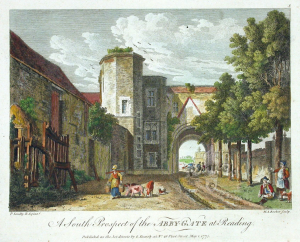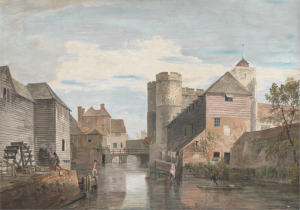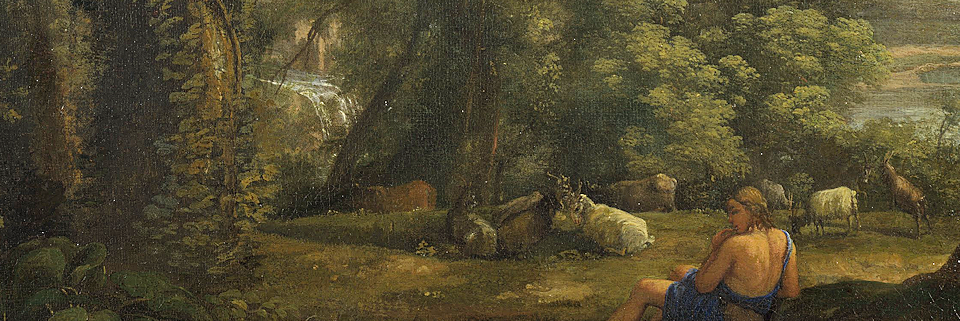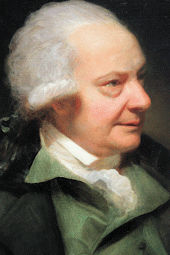Paul Sandby, born in Nottingham, was an English topographical watercolorist and graphic artist who, along with his brother of Thomas Sandby, became one of the founding members of the Royal Academy in 1768.
Sandby joined the topographical drawing room of the Board of Ordnance at the Tower of London in the early 1740s and in 1747 was tasked as chief draughtsman with mapping the remote Scottish Highlands - a "compleat and accurate survey of Scotland". While undertaking this commission, which included preparing designs for new bridges and fortifications, he began producing watercolour landscapes documenting the changes in Scotland after the 1745 rebellion, and sketches of Scottish events such as the hanging in Edinburgh of soldier-turned-forger John Young in 1751.
In 1752, he took up a post with his brother producing landscapes of the royal estates at Windsor (the royal collection includes over 500 images by the Sandby brothers). His skills were applauded by fellow artists such as Thomas Gainsborough: if one wanted "real Views from Nature in this Country", declared Gainsborough in 1764, there was no better artist than Sandby, who frequently "employ'd his pencil that way."
In 1768, he was appointed chief drawing master to the Royal Military Academy at Woolwich, a position he retained until 1799.
Sandby made his first recorded visit to Wales in 1770, later (1773) touring south Wales with Sir Joseph Banks, resulting in the 1775 publication of XII Views in South Wales and a further 12 views the following year, part of a 48-plate series of aquatint engravings depicting Welsh scenery commissioned by Banks.
Sandby is also known for his many drawings of London street-life (roughly 76 in total), producing "Twelve London Cries done from Life, Part 1st" in 1760. Sandby also drew several caricatures ridiculing the painter, William Hogarth.
Sandby died in London in 1809 and was described in his obituaries as "the father of modern landscape painting in watercolors".
For Sandby's entry in The Dictionary of National Biography (Stephen, 1897), see "Reference Links" in the main menu or go HERE.
-
Portrait of Paul Sandby - Francis Cotes 1761 (Tate Britain, London, UK)
-
Portrait of Paul Sandby - Sir William Beechy - Oil on Canvas
-
"The Tide Rising at Briton Ferry" - Paul Sandby 1773 - Watercolor over graphite; laid down (National Gallery of Art, Washington, D.C.)
-
"Laterna Magica" - Paul Sandby 1760 - Watercolor & bodycolor over pen & ink (British Museum, London, UK)
-
"Roslin Castle, Midlothian 2" - Paul Sandby - Watercolor and gouache on paper
-
"Cows in a Park" - Paul Sandby - Graphite, watercolor & ink on paper (Tate Britain, London, UK)
-
"Caernarfon Castle" - Paul Sandby 1770's - (National Gallery of Wales/Collection: Llyfrgell Genedlaethol Cymryu)
-
"Queen Elizabeth Gate" or "View Under the Norman Gate" - Paul Sandby 1767 (Yale British Art Collection)
-
"A Castle" - Paul Sandby - Watercolor (Tate Britain, London, UK)
-
"A View of Nottingham Castle with St. Nicholas' Church and Houses - Paul Sandby - Oil on Canvas (Nottingham City Museums and Galleries)
-
"Roslin Castle" - Paul Sandby - in or after 1780 - Etching & watercolor on laid paper (National Gallery of Art, Washington, D.C., USA)
-
"The North Terrace", Windsor Castle, Looking West - Paul Sandby c1765 - Bodycolor over graphite (Yale, Mellon British Art Collection)
-
"The Rainbow" - Paul Sandby - (Nottingham City Museums and Galleries)
-
"The Westgate, Canterbury" - Paul Sandby c1783 - Gouache & graphite on thin paper mounted on panel (Yale, Mellon British Art Collection)
-
"Windsor Castle: View of the Round and Devil's Towers from the Black Rock" - Paul Sandby - Watercolor
-
"Windsor Park" - Paul Sandby - n.d. - Watercolor
-
"Windsor Castle: The Norman Gate & Deputy Governors House" - Paul Sandby 1783 (Yale, Mellon British Art Collection)
-
"A South Prospect of the Abby-Gate at Reading" - Paul Sandby 1773
-
"West Gate at Canterbury" - Paul Sandby - in or after 1780 - Etching and Watercolor on laid paper (National Gallery of Art, Washington, D.C, USA)
